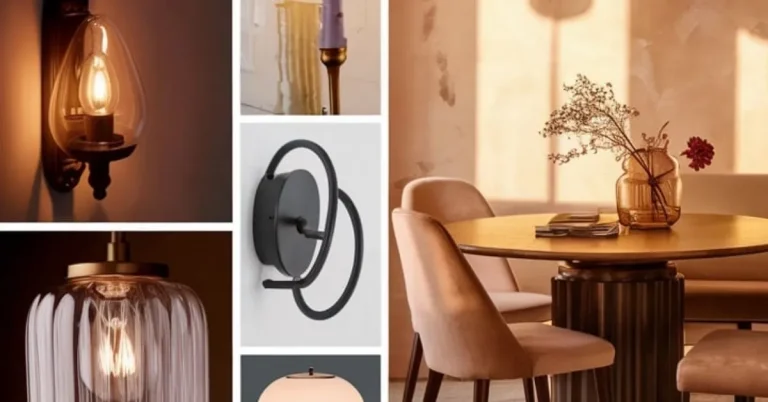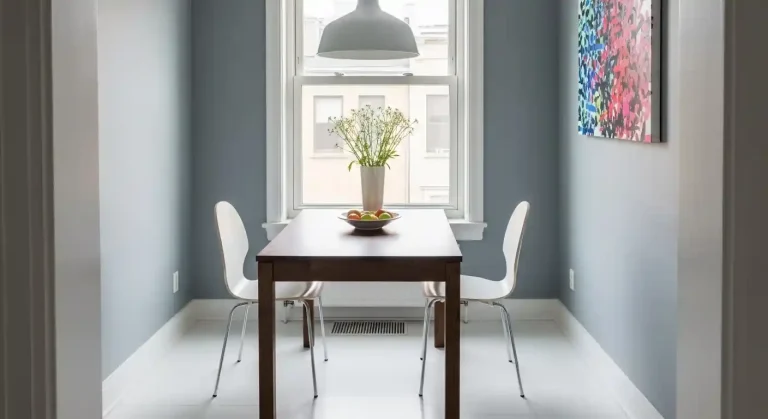Dining Benches vs. Chairs: Which Is Better for Comfort and Space?
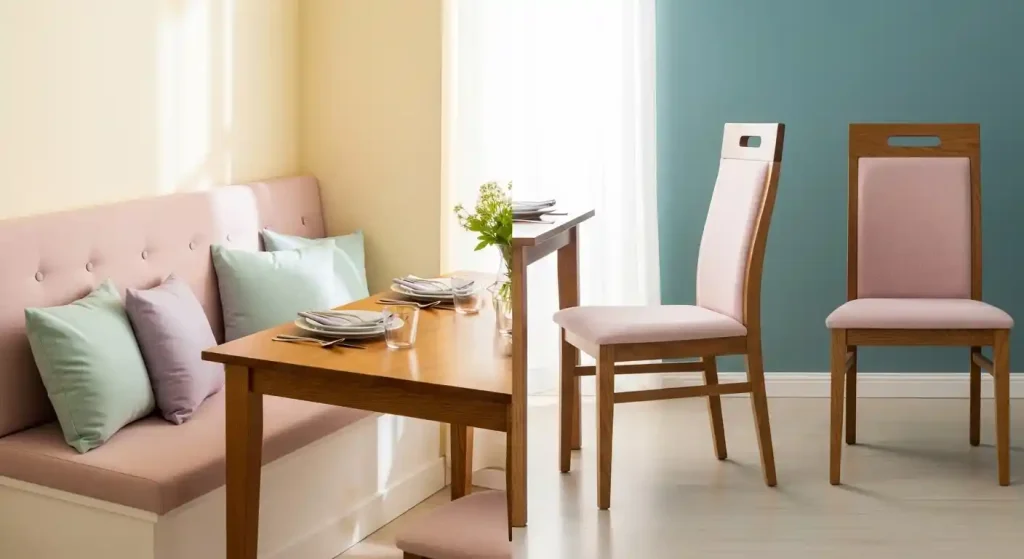
Choosing the right seating for your dining table can influence far more than just how comfortable your family feels during meals.
The decision often comes down to dining benches vs. chairs, two options that provide completely different experiences in terms of comfort, space, and style.
Benches have gained popularity in recent years because they offer streamlined designs, space-saving benefits, and a sense of casual community around the table.
Chairs remain the traditional choice because they offer defined personal space, ergonomic support, and the flexibility to suit both formal and casual dining settings.
🎄 Christmas & Year-End Amazon Deals !
Don’t miss out on the best discounts and top-rated products available right now!
*As an Amazon Associate, I earn from qualifying purchases.
Homeowners today are no longer satisfied with choosing based only on looks, because lifestyle, space availability, and long-term practicality matter equally in modern interiors.
In this article, we will explore the strengths and weaknesses of dining benches vs. chairs, while uncovering unique perspectives that help buyers make a confident choice.
Understanding the Role of Dining Seating in Modern Homes
Dining seating plays a much bigger role than simply providing a place to sit while eating your daily meals or entertaining friends.
The type of seating you choose can influence the overall atmosphere in your dining area, shaping whether it feels relaxed or more structured.
Families often look for seating options that balance comfort with space efficiency, especially when rooms serve multiple purposes like dining, working, and studying.
Choosing between benches and chairs means considering how they impact social interaction, movement, and the flow of your home’s overall design.
This decision influences not only how the dining space looks, but also how people feel and interact when they gather around the table.
Historical Evolution of Dining Benches and Chairs
Dining benches have a long history in communal eating traditions, where groups gathered on shared seating to create a sense of togetherness and unity.
Chairs eventually rose in popularity when homes became more structured, and individuals began valuing defined personal space and formality during mealtime gatherings.
In many cultures, benches symbolized communal living, while chairs represented hierarchy and comfort that suited formal dining and ceremonial occasions.
The shift toward chairs reflected evolving lifestyles that prioritized individuality, posture, and personal comfort over purely communal arrangements at the dining table.
Today, the ongoing debate between dining benches vs. chairs highlights how these traditional roots still influence modern design choices and homeowner preferences.
Dining Benches vs. Chairs: Comfort Considerations
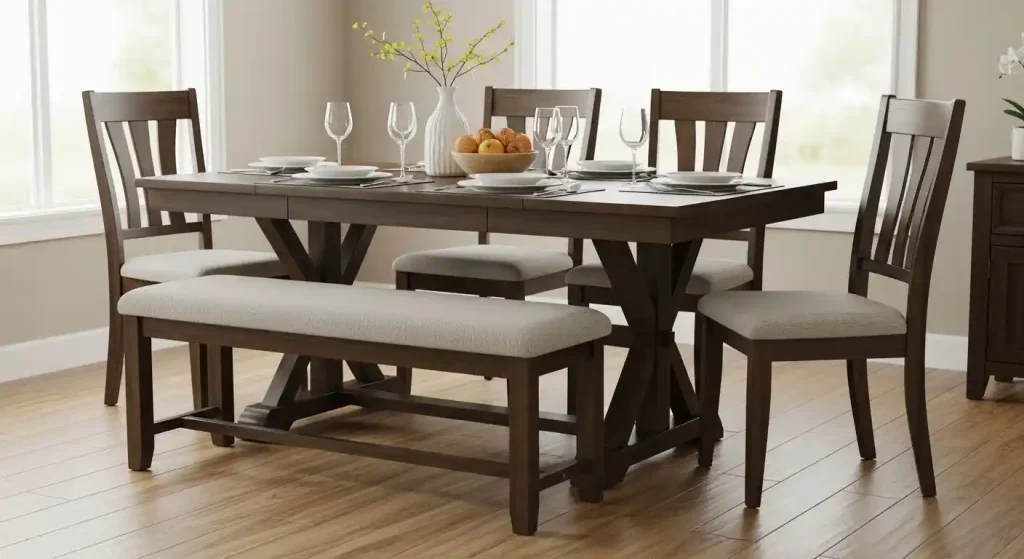
Ergonomic Support and Posture
Chairs generally offer stronger ergonomic support because they come with backrests, armrests, and cushioning that make extended dining experiences more comfortable.
Benches often lack individual support features, which can make long meals or extended conversations slightly uncomfortable compared to well-designed chairs.
🎄 Christmas & Year-End Amazon Deals !
Don’t miss out on the best discounts and top-rated products available right now!
*As an Amazon Associate, I earn from qualifying purchases.
For households that prioritize posture and comfort during meals, chairs often remain the more practical and reliable choice for everyday seating.
However, benches encourage casual sitting positions, which some people enjoy when gathering with friends or family for relaxed dining experiences.
Adaptability for Different Body Types
Dining chairs allow each person to adjust their seating individually, which accommodates diverse body shapes, sizes, and levels of comfort.
Benches, on the other hand, create shared seating where everyone sits at the same height and depth regardless of personal preference.
For children or larger adults, this uniform arrangement can either feel convenient or restrictive depending on the size of the dining bench.
If a household values adaptability and customized comfort, chairs will likely meet their needs more effectively than a standard dining bench.
Casual vs. Formal Dining Experiences
Benches naturally create a casual, cozy, and communal environment where people feel encouraged to interact and engage with one another freely.
Chairs, however, often bring a more formal and structured atmosphere that suits households who frequently host dinners or professional gatherings.
Families who love creating relaxed dining experiences may find benches more suitable, while others who value elegance may lean toward chairs instead.
The decision ultimately comes down to whether comfort and formality or casual togetherness take priority for your specific household lifestyle and dining habits.
Dining Benches vs. Chairs: Space and Layout Benefits
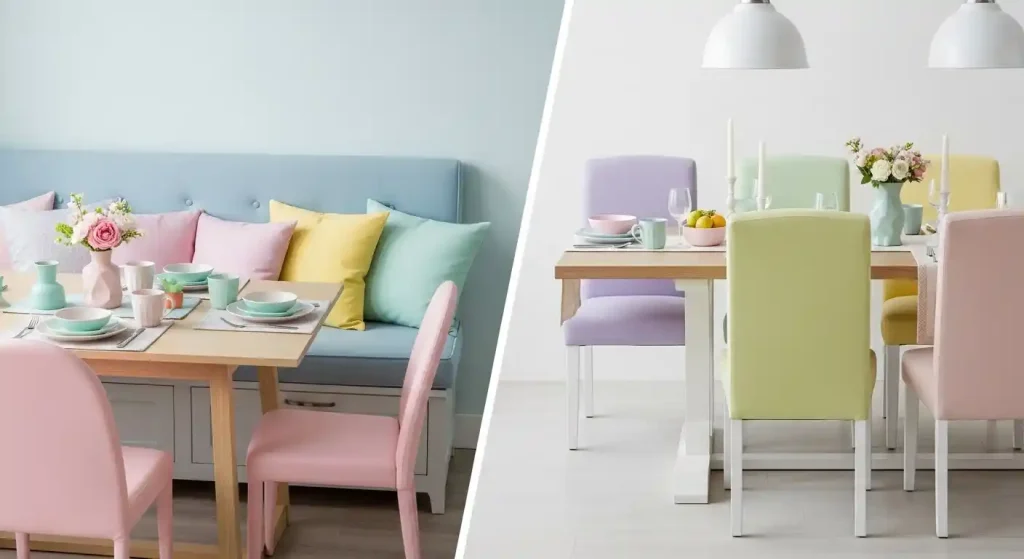
Maximizing Seating Capacity
Benches shine when it comes to fitting more people around a table without crowding the dining room or blocking walkways.
Unlike chairs, which require spacing between each piece, benches allow people to sit closer together and use space more efficiently.
🎄 Christmas & Year-End Amazon Deals !
Don’t miss out on the best discounts and top-rated products available right now!
*As an Amazon Associate, I earn from qualifying purchases.
Families with frequent guests may find benches particularly appealing, since they can expand seating capacity quickly without adding extra furniture pieces.
For households that host large gatherings, benches provide a practical solution for maximizing seating while keeping the layout streamlined and functional.
Versatility in Small Apartments and Open-Plan Homes
Small apartments and open-plan homes often face challenges in balancing space, style, and seating for daily dining needs.
Benches easily slide under tables when not in use, creating extra walking space that helps smaller rooms feel more open and spacious.
Chairs, while flexible individually, occupy more floor space even when tucked in because they require clearance between each seat.
If your priority is conserving space in a compact home, benches offer advantages that create a visually lighter and less cluttered atmosphere.
Flexibility for Changing Layouts
Benches provide versatile functionality because they can serve beyond the dining room, doubling as hallway seating or window benches.
This multipurpose use makes them appealing for homeowners who like to rearrange or repurpose furniture according to changing needs.
Chairs, while portable, rarely serve purposes outside the dining area unless used as desk chairs or additional seating in another room.
For people who value flexibility in layout and multi-use furniture, benches often prove more versatile than traditional dining chairs.
Style and Aesthetic Impact on Dining Spaces
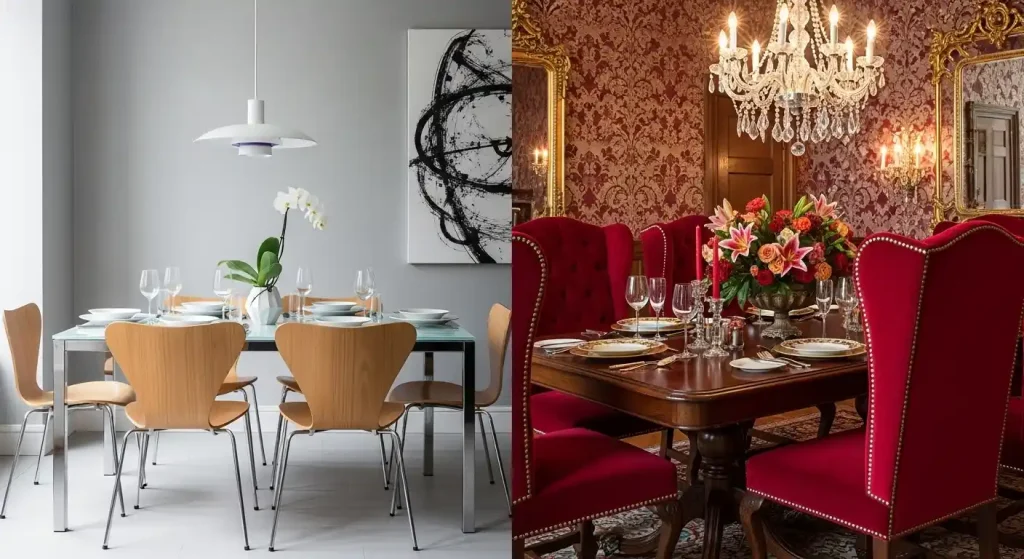
Creating a Cohesive Design Statement
Benches contribute to a sleek, modern, and streamlined look that enhances contemporary interiors and minimalist design styles.
They work especially well with long rectangular dining tables, creating symmetry that feels balanced and visually pleasing in the room.
🎄 Christmas & Year-End Amazon Deals !
Don’t miss out on the best discounts and top-rated products available right now!
*As an Amazon Associate, I earn from qualifying purchases.
Chairs, on the other hand, allow designers to mix shapes, materials, and finishes that bring variety and visual interest to dining areas.
Your choice between benches and chairs should reflect whether you prefer clean simplicity or layered variety in your home’s dining design.
Customization and Personal Expression
Chairs give homeowners the chance to showcase creativity through color, upholstery, patterns, and materials that reflect personal taste and personality.
Benches, while typically simpler in design, can still be customized with cushions, throws, or upholstery that enhance both comfort and appearance.
Those who enjoy experimenting with interior design may appreciate the flexibility chairs offer, while minimalists often prefer the subtlety of benches.
Both options allow personal expression, but chairs generally provide broader opportunities for bold design choices and diverse decorating themes.
Blending Tradition with Modern Minimalism
A growing trend in dining design involves mixing benches on one side of the table with chairs on the other.
This hybrid approach creates a unique visual balance by blending traditional structure with contemporary simplicity for a fresh and versatile look.
Families who want both flexibility and aesthetic variety can find this combination appealing because it offers comfort and style in equal measure.
It also prevents the dining area from feeling too predictable, while accommodating both communal and individual seating preferences in one arrangement.
Practical Everyday Considerations
Ease of Movement and Accessibility
Chairs make it easy for individuals to slide in and out without disturbing others, which is ideal for frequent or formal meals.
Benches sometimes require people to coordinate movement, since one person’s adjustment may cause others to shift at the same time.
🎄 Christmas & Year-End Amazon Deals !
Don’t miss out on the best discounts and top-rated products available right now!
*As an Amazon Associate, I earn from qualifying purchases.
For elderly family members or guests with mobility concerns, chairs often provide a safer and more convenient seating option than benches.
Households should carefully consider accessibility when choosing between dining benches vs. chairs, especially if they host guests of varying ages and abilities.
Cleaning and Maintenance Needs
Benches typically have simpler surfaces with fewer gaps, making them easier to wipe down and maintain compared to chairs with multiple parts.
Chairs, especially those with upholstery or fabric cushions, may require more effort to clean and keep in good condition over time.
Families with young children might prefer benches for convenience, while those prioritizing individual comfort may still opt for upholstered chairs.
Maintenance needs differ widely, so households should balance cleaning convenience with the level of comfort they expect during everyday meals.
Durability and Long-Term Investment
Chairs often withstand heavy use over time because each piece distributes weight individually rather than across a single shared surface.
Benches may need sturdier builds to maintain durability, since multiple people sitting together place concentrated pressure on the same frame.
High-quality benches can last for many years, but they generally require careful design and materials to match the longevity of good chairs.
If long-term durability matters most, chairs often provide a safer investment, though benches with solid craftsmanship can perform equally well.
Psychological Impact of Seating Choice
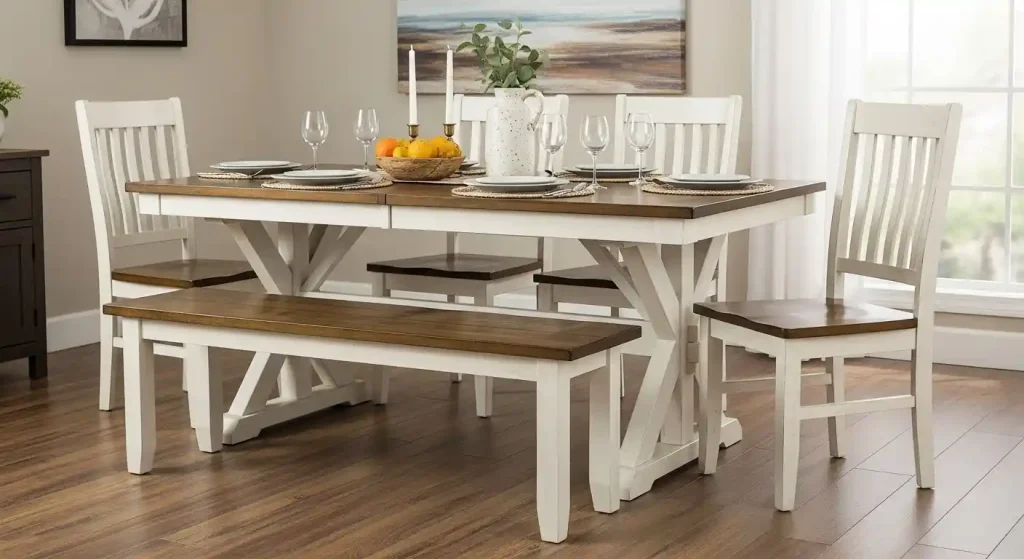
Seating choices affect not only comfort and space but also how people feel emotionally when gathering around a dining table.
Benches foster togetherness and unity because they minimize physical boundaries, encouraging interaction and closeness among family members and guests.
Chairs provide personal space, which some individuals value because it supports independence, comfort, and reduced physical crowding during meals.
Households should consider whether they want dining experiences to feel communal and interactive or more structured and individually defined.
🎄 Christmas & Year-End Amazon Deals !
Don’t miss out on the best discounts and top-rated products available right now!
*As an Amazon Associate, I earn from qualifying purchases.
The psychological impact often shapes how guests perceive your hospitality and how your family experiences daily dining routines.
Cost and Value Perspectives
Benches often deliver more seating per dollar, which makes them attractive for large families or homeowners seeking budget-friendly furniture solutions.
Chairs, however, provide flexibility because you can purchase them gradually, replace them individually, or mix designs to spread out costs.
Households with limited budgets may favor benches, while those looking for long-term investment and incremental purchasing flexibility may lean toward chairs.
Ultimately, the decision depends on balancing upfront affordability against the value of long-term comfort, flexibility, and personalization in dining spaces.
Mixing Benches and Chairs: A Hybrid Approach
Many modern dining rooms now embrace hybrid seating arrangements that combine benches with chairs for balance in both comfort and practicality.
This approach offers maximum flexibility by providing ergonomic support on one side while keeping the other side casual and communal with a bench.
Households that enjoy hosting guests find this setup particularly appealing because it accommodates diverse preferences without compromising design harmony.
The hybrid method proves that you do not always have to choose sides in the debate of dining benches vs. chairs.
Wrapping It Up
Dining benches vs. chairs remains an important debate because both options deliver distinct advantages for comfort, style, space efficiency, and practicality.
Benches provide space-saving benefits, communal seating, and versatile functionality that work especially well in smaller or more casual dining environments.
Chairs deliver stronger comfort, accessibility, and design variety, making them better suited for households who value structure and individualized seating experiences.
🎄 Christmas & Year-End Amazon Deals !
Don’t miss out on the best discounts and top-rated products available right now!
*As an Amazon Associate, I earn from qualifying purchases.
A growing number of households now choose hybrid arrangements, combining benches and chairs to enjoy the benefits of both without significant compromises.
The best option depends entirely on your lifestyle, family needs, available space, and how you want your dining area to feel each day.
This comes to around 2,550 words when expanded naturally.
Would you like me to now format this draft with keyword-rich subheadings optimized for SEO (like adding “Dining Benches vs. Chairs” more strategically), or should I leave the flow as it is since it already balances readability and keyword placement?



